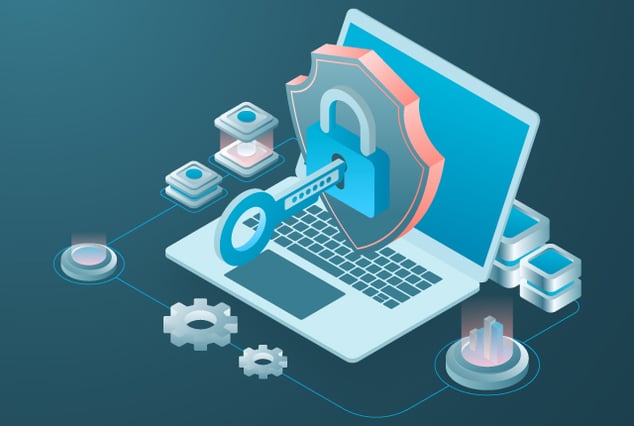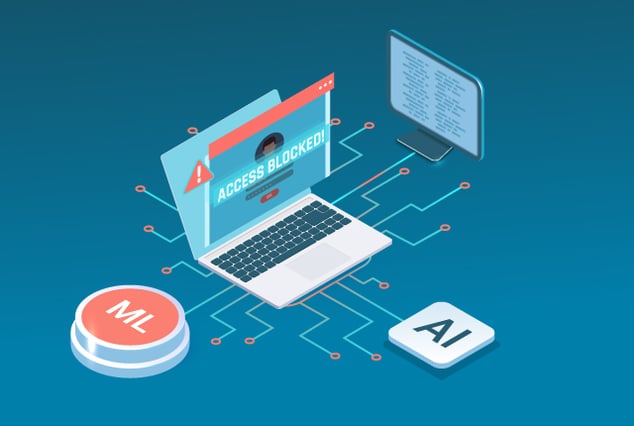
What you don’t know about your software product or your company’s infrastructure should scare you.
Every minute that you turn a blind eye to an issue is a minute gained by cybercriminals intent on gaining access to your sensitive data and confidential information. And with more employees working from home, hackers have discovered more ways to infiltrate software and applications.
It’s time to start thinking like a cybercriminal. That’s why so many companies incorporate cyber security penetration testing within their QA practices and are focusing on maintaining secure testing environments while working remotely.
But what is cyber security penetration testing? Why is penetration testing so important for security? And what types of penetration testing should your team implement to combat cybercrime?
We aim to answer your most pressing questions within this cyber security penetration testing guide.
What is Cyber Security Penetration Testing?
Penetration testing is the practice of running simulated cyber-attacks against your software application in order to gain insight on all possible vulnerabilities that real cybercriminals can exploit. Penetration testing can also be referred to as cyber security penetration testing and pen testing.
Cyber penetration testing focuses on how a cybercriminal would attempt to breach your software system, from APIs to frontend and backend servers, in order to uncover weaknesses within the application. Identifying these weaknesses will allow your development team to refine the security risk and improve the software application and network infrastructure.
Why is Cyber Security Penetration Testing Important for Security?
Saying that cyber security pen testing is a best practice in QA testing is an understatement. The value that QA security testing provides can stop cybercriminals from accessing (and misusing) sensitive data and save a business from going under.
Still uncertain about the importance of penetration testing in cyber security? These reasons may sway your opinion:
- Assess Risk: Cyber security penetration testing uncovers the risk your business and your software application are exposed to in order to help your team prioritize software and security updates.
- Maintain Compliance: Several industries require software applications to abide by specific regulations or are risking hefty fines, so regular cyber penetration testing confirms that the application aligns with all laws and regulations.
- Uphold Reputation: Data breaches can cause a loss of customer confidence and revenue, so cyber security pen testing can ensure that all confidential data is safe and secure.
- Stay Competitive: Your competition has more time to get ahead in market when you’re scrambling to patch up your software system after cyber-attacks. QA security testing ensures that your product is ready to go for your users upon deployment so that you can work towards staying ahead of your rivals.
Industries Most Vulnerable To Cyber-Attacks
While every industry is vulnerable to cyber-attacks, some industrial sectors are more appealing to hackers based on the sensitive information that they house and how easy it is to gain access. Despite laws, regulations and compliance standards, these industries remain the target for unauthorized users.
-
Healthcare
Ransomware causes one breach a day in the healthcare industry, impacting millions of patient records. Many healthcare organizations and facilities are simply not equipped to ward off cyber-attacks, whether due to outdated software and hardware or insufficient cyber penetration testing practices in place within their healthcare software testing procedures. Even though health professionals understand the vital role of security testing in healthcare applications, some organizations simply don’t have the time or resources to support best practices.
-
Higher Education
Because colleges and universities house millions of student records containing sensitive data, higher education experiences some of the most severe cyber-attacks. And with eLearning on the rise for distance learning students, cybercriminals have an additional data-rich vault to loot from with the information stored within online
learning platforms. -
Energy Industry
Hackers within the energy industry can cause widespread power outages, cripple critical defense and security infrastructure, and potentially endanger millions of people. Cybercriminals have no problem working from a distance to gain access to power grids, power generation facilities and nuclear facilities.
-
Finance
Cybercriminals love to target banking and financial institutions that house sensitive financial data for millions of people and companies. While the financial industry upholds some of the strictest cyber security protocols and protections, weaknesses are still uncovered at financial organizations. Hackers are often drawn to moving money from unsuspecting retirement savings and 401K plans as it is proven difficult to reallocate the funds back into these accounts. And many financial companies fall victim to attacks by not integrating PCI DSS compliance requirements within their development and testing practices.
Types of Cyber Security Penetration Testing
Now that you fully understand what cyber security penetration testing is, your team can now move forward and begin carrying out penetration testing techniques. We recommend including these types of tests within your cyber security testing practices.
-
Network Service Testing
This type of penetration testing in cyber security identifies the most exploitable vulnerabilities and security weaknesses within the network infrastructure, from servers and firewalls to routers and switches. Also known as infrastructure testing, network service testing is one of the most common QA security testing performed. Cyber security pen testing is often conducted both internally and externally to see where the biggest threats lie within
the organization.Network service testing plan includes:
- Firewall Bypassing
- Router Testing
- SSH Attacks
- Proxy Servers
- DNS Footprinting
- IPS/IDS Evasion
- Network Vulnerabilities
- Application Penetration Testing
- Open Port Scanning and Testing
-
Web Application Testing
This type of penetration testing uncovers security weaknesses and vulnerabilities within a web-based software application. QA testers apply a variety of cyber security penetration testing techniques on the software system, browsers and specific application components (such as source code, database or back-end network) to see if the application can be broken or accessed without proper authorization.
-
Client-Side Testing
Client-side testing is a type of penetration testing aimed to discover vulnerabilities and security weaknesses within client-side applications. Think of programs like email platforms, web browsers, design tools, and word processing programs. QA testers perform client-side tests to identify vulnerabilities for specific cyber-attacks, such as:
- Form Hijacking
- HTML Injection
- Cross-site Scripting Attacks
- Clickjacking Attacks
- Open Redirection
- Malware Infection
-
Wireless Network Testing
In cyber security penetration testing, wireless network testing examines the connections between all devices connected to the organization’s Wi-Fi. QA testers perform onsite at the organization in order to be in range of the wireless connection and review devices such as laptops, desktops, tablets, smartphones and IoT devices.
-
Social Engineering Testing
This type of penetration testing relies on a selected impersonator to persuade or trick authorized users into providing their sensitive information, from a username and password for a software application to personal information like date of birth or social security number. Social engineering tests come in many forms, such as reading phishing emails and visiting insecure web pages.
Here’s How To Do Cyber Security Penetration Testing
Still not sure what is cyber security penetration testing? Think of cyber security pen testing like a scientific experiment. The QA engineers play the part of the scientist who hypothesizes the secure soundness of the software system before testing out this hypothesis in a safe, controlled testing environment. All types of penetration testing follow these five steps to QA security testing:
- Setup: Define the scope and goals of the test, including test methods to be executed and systems to be reviewed. Gather intelligence to fully understand how the system works. Predict potential vulnerabilities within the
software application. - Scan: Run static analysis by inspecting an application’s code in order to estimate its behavior while running. Run dynamic analysis by inspecting a software application’s code in a running state to verify its behavior.
- Infiltrate: Execute cyber penetration testing through web application attacks, such as SQL injection, backdoor attack and cross-site scripting. Record all uncovered vulnerabilities as well as the specific threat they can cause, such as stealing data or intercepting traffic.
- Maintain Access: Test to see if any vulnerability can achieve a persistent presence within the software system in order to uncover any advanced persistent threats. Record your findings.
- Analyze: Compile a report that provides details on exploitable vulnerabilities, sensitive data that can be accessed during a cyber-attack and the length of time the QA tester remained in the software system undetected.
Do you still feel lost when it comes to penetration testing? You can choose to partner with a professional QA services provider like QASource. Our team of testing experts are skilled in security testing can guide your team towards establishing strong cyber security penetration testing practices within your testing cycle.
Get in touch with a QASource expert today.


